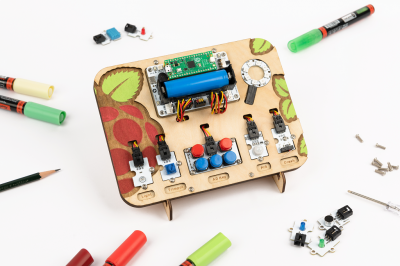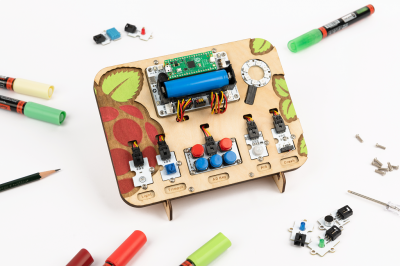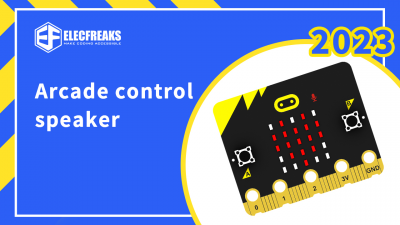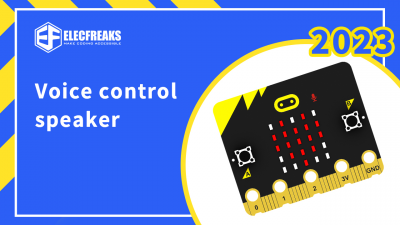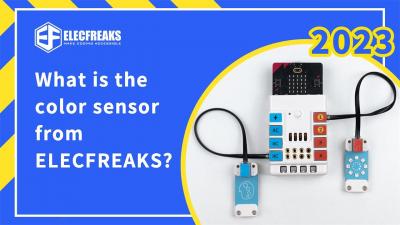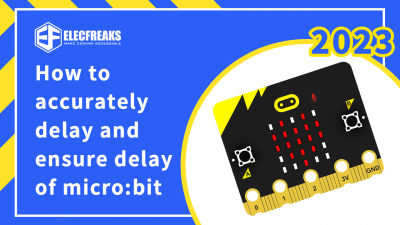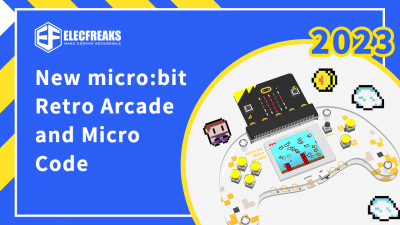TUTORIALS
Case 2丨Using Wukong 2040 sensor to train neural network
Neural networks are not limited to processing one type of data at a time. One of their biggest advantages is that they can be very flexible with input data types as long as the format and order of the data remain unchanged from training to inference. Therefore, we can use them to perform sensor fusion for various tasks.
Case 1: Using Wukong 2040 sensor to train neural network
The Wukong2040 is built on Raspberry Pi RP2040, which is Raspberry Pi's first microcontroller - and is fully supported by Edge Impulse. You'll be able to sample raw data, build models, and deploy trained machine-learning models directly from Studio.
Wireless control of speakers
By using the micro:bit wirelessly to remotely control another micro:bit for the corresponding command execution, the micro:bit Retro Arcade can be used on this basis to wirelessly control the speaker via a joystick.
Voice controlled speakers
The definition of a "smart speaker" is a wireless audio and voice command device with an integrated virtual assistant that people can use through voice commands, such as asking the intelligent speaker to play music, announce the weather, set an alarm clock, etc. Some smart speakers can also integrate connectivity for Wi-Fi, Bluetooth, and other wireless protocol standards to add uses beyond audio playbacks, such as controlling smart home devices via voice. Some intelligent speakers also include a touchscreen. Smart speakers with touch screens are known as Smart Screens.
What is the color sensor from Elecfreaks?
Among sensors that detect light, sensors that detect the three primary colors of red, green, and blue are called color sensors.
Color sensors detect RGB values by receiving ambient light using photodiodes.
How to make an tablet bracket using a Laser Engraving Machine?
Nowadays, with the improvement of people's material living standards, cell phones, and computers, has become a mainstream commodity, especially the tablet computer, not only meet the functions of the computer can also meet the functions of the phone, but the ensuing problems are many, most people like to play cell phones, tablet computers, but when playing and ignore the posture, it is easy to cause cervical spondylosis, eye fatigue, etc., the tablet bracket is to serve the public to produce, a tablet bracket can effectively solve these problems for us.
What is a soil moisture sensor?
A soil moisture sensor is a device that measures the moisture, or water content, present in the soil. It is used in various applications such as agriculture, horticulture, and environmental monitoring to determine soil water availability and to help optimize irrigation practices. We can learn how to apply soil moisture sensors through this article.
How micro:bit is precisely delayed and guaranteed?
One of the main problems encountered when using micro:bit is "How do I get my program to do more". For example, a program may want to display a certain amount of time on the screen but also respond to button presses during that time. Or, perhaps it needs to remember to do something at some point in the future, but continue to do its main function until then.
How to use TOOCA laser engraving machine L1 to make love puzzles for children
Puzzles are an ancient game from England in the 18th century. It first breaks up a whole into independent parts. Then it allows children to put these separate parts back into the original graphics through thinking and hands-on, which can improve children's abilities.
In this article, let us teach children to do a love puzzle with TOOCA, which can teach them knowledge of equipment use and enjoy the fun of puzzles after cutting.
Adaption of micro:bit Retro Arcade with MicroCode
You can finish programming whenever and wherever without a computer, only with micro:bit V2, retro arcade, and MicroCode. Why don't you try it soon?





